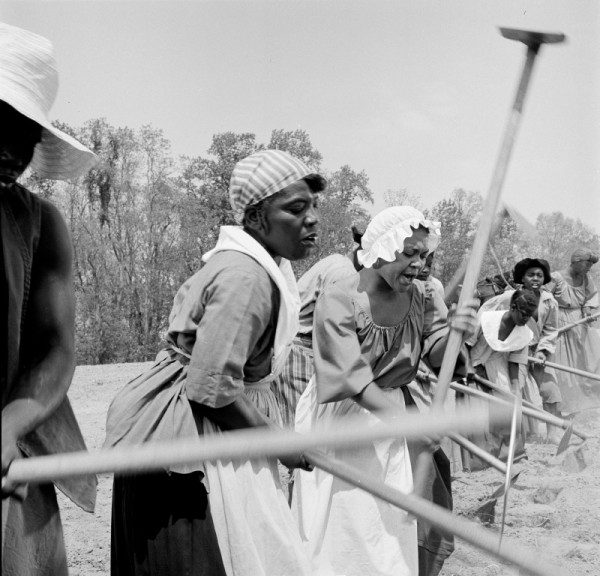
In colonial times, spirituals and religious folk songs did more than carry musical messages of faith and hope. For those who were enslaved, they were also a way to communicate.
“One of the challenges that many African-Americans faced was learning which cultural expressions were acceptable by their slave owners and which were not,” said Harvey Bakari, manager of African-American initiatives at the Colonial Williamsburg Foundation.
Communication among African-Americans was so restricted that they often were forbidden to play their native instruments from West Africa or sing songs from their homeland. Slave owners knew the sounds of drums would carry long distances and were often used as a means of communication in West Africa. Even speaking their own languages was considered threatening by owners who feared rebellion and uprisings.
WANT TO KNOW MORE?
You can hear renditions of spirituals here:
Throw Me Anywhere, Lord — Georgia Sea Island Singers
While many instruments were banned, the banjo and fiddle were allowed, as was singing. And sometimes those songs could contain hidden messages.
“Slaves went to church with their masters and learned the hymns that were being sung. They could sing songs about Moses liberating his people and put another meaning to it,” Bakari explained. Christian songs didn’t feel as threatening to the slave masters, he said.
Some of the messages hidden in the songs included escape tips, directions to find help and navigating the woods at nighttime. The spiritual “Wade in the Water” advises the runaway to wade through rivers and ponds so their scent could not be picked up by dogs. Songs that referenced “going home” usually referred to going north to freedom.
The Ring Shout
“The Ring Shout was a method of singing spirituals and hymns within the context of an African form of dance worship. The group of people formed a circle and moved in a counterclockwise direction. The rhythms simulated a group of their native drums with a foot stomp – drag, stomp, drag – carrying the low base sound, preferably on a wooden surface. The mid-range was simulated usually by the lead singer who rhythmically strikes a staff on the floor, and the upper range was made by people in the circle clapping their hands. On top of that, you added the vocals,” Bakari said.
In a ring shout, the group started off slowly, repeating chants. As the speed increased, the group added hand clapping, foot stomping and staff pounding. It wasn’t just singing – it was an experience of haunting, intense sound.
Alan Lomax
In the 1960s, folklorist/ethnomusicologist Alan Lomax traveled throughout the southeast, searching for traditional African-American music that also included historic re-enactment. During his travels, he found groups of African-Americans performing spirituals in a traditional manner to tell the story of slavery.
Groups such as the Georgia Sea Island Singers, Bessie Jones and John Davis performed with a passion and desire to pass on the ritual.
“Before commercialization, spirituals sung in churches were very raw, very energetic and spiritually based. Now, people will tell you that you can or can’t sing, but back then, you would hear just about every type of voice. Everybody sang, no matter what kind of voice they had,” Bakari said.
Not just singing, but an experience
This rhythmic singing became vital for the African-Americans who were trying to make sense of an impossible situation. The spiritual communication, along with the support of a close enslaved community, could provide strength – and even hope.
“Spiritual songs gave them some answers, some light at the end of the tunnel and some belief that one day, they actually would be free,” Bakari said.

There are many of these on youtube in the Alan Lomax Archive.
Here’s one, but there are many others!
https://www.youtube.com/watch?v=3dGamWaYcLg